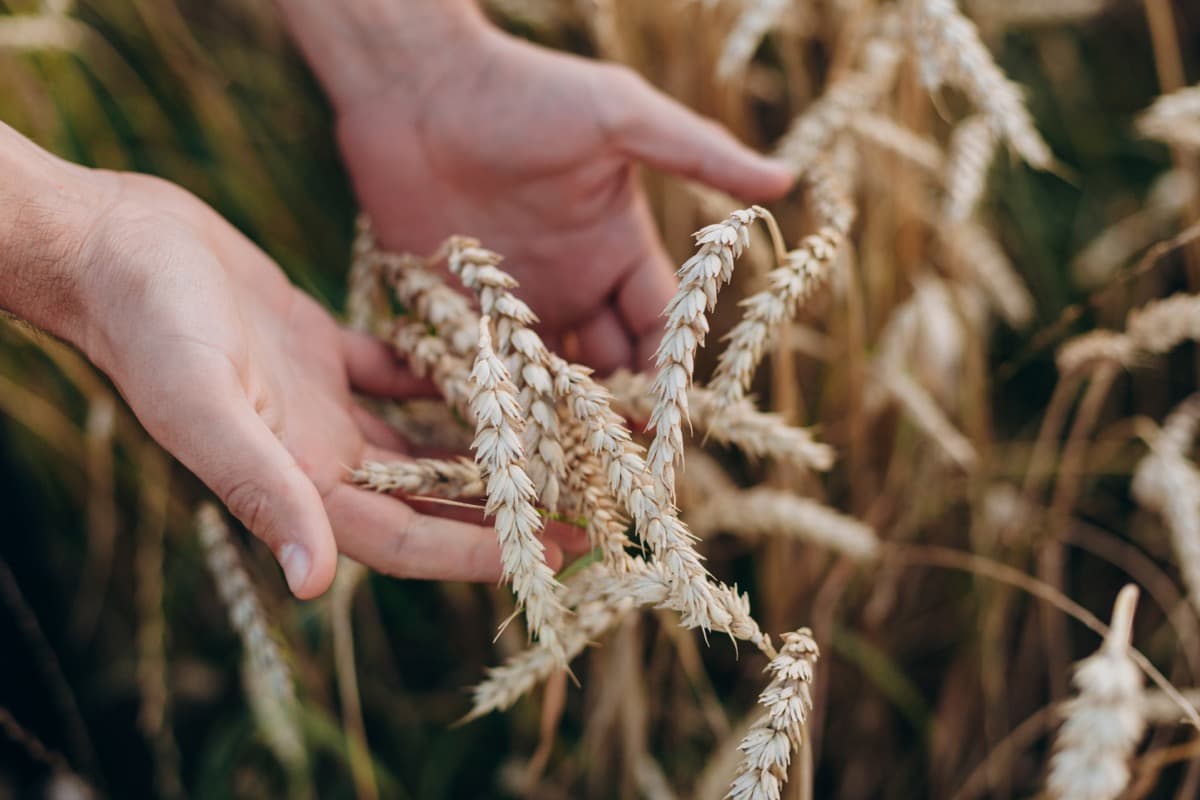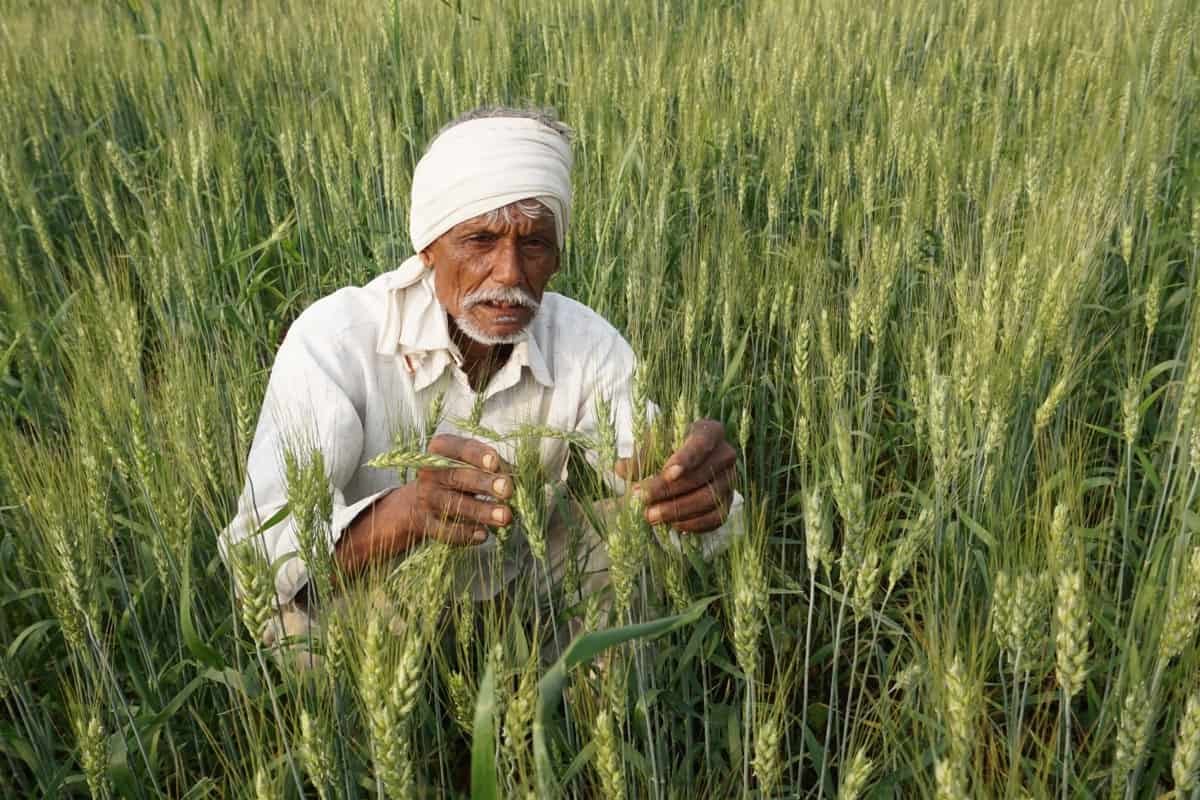Wheat-gall Nematode, Anguina tritici, belonging to the Family Anguinidae of the Order Tylenchida, is also known as seed-gall nematode as it is found in the seed heads of wheat plants, where it feeds on the developing grains. The presence of the nematode in wheat heads results in the formation of galls, and the grains become distorted, discolored, and shriveled.

The wheat gall nematode is a microscopic roundworm. It is a migratory endoparasite that lives inside the plant and moves through its tissues, feeding on the nutrients it needs to survive. The wheat gall nematode is a major concern for wheat production worldwide and is particularly damaging in developing countries where wheat is the major staple crop.
To effectively manage this pest, it is important to understand its life cycle, its preferred habitats, and the best methods for controlling it. This article will provide an overview and discussion of the Wheat-gall Nematode Pest in wheat crops, including its symptoms, identification techniques, and control.
Wheat-gall Nematode Pest Management in Wheat
Life Cycle of Wheat-gall Nematode Pest in Wheat Crop
The life cycle of the wheat-gall nematode pest in wheat crops is complex. Naturally, the dry wheat galls enter the soil from the ripe ears. The galls can survive in the soil in a dormant state for up to two years. Each gall can contain about 1,000 to 30,000 larvae, which become active when the gall is exposed to moisture. Then the larvae will be dispersed into the soil, infest a host plant, and feed on their young leaves and meristematic tissues.
Later, as the plants reach the earing stage, the larvae will enter the flower buds and produce the galls instead of the normal seed. The larvae will then mature into an equal number of adult males and females. They mate and lay a huge number of eggs. The young larvae that emerge from these eggs progress to the next stage and then go dormant until the next season. There is only one generation per year.
Occurrence of Wheat-gall Nematode Pest in Wheatfield
- Location of Wheat-gall Nematode: The pest is native to Europe and Asia but has been spread to other regions by humans. The pest is found to infest the crop in France, Germany, the United Kingdom, Turkey, China, India, Africa, Brazil, and Australia.
- Host Range: The wheat-gall nematode can infect different crops, including spelt and emmer wheat varieties, rye, triticale, sorghum, millet, and buckwheat.
Factors Favoring the Population Increase of Wheat-gall Nematode Pest in Wheatfield
- Poor crop management practices like inadequate weed control, inadequate fertilization, and inadequate rotation of crops can lead to the development of an environment conducive to the pest.
- The wheat-gall nematode has no natural predators to keep its population in check.
- Higher Reproductive Rate – They reproduce quickly due to their short life cycle. A female nematode can lay up to 200 eggs in a single day, and the eggs will hatch within five days.
- The adaptability to dry and wet soils and low and high temperatures allows the wheat-gall nematode to survive in various climates and conditions, making it difficult to contain its population.
In case you missed it: Wheat Molya Nematode Pest Management in Wheat: Symptoms, Treatment, Chemical, Biological, Natural, and Organic Control

Identification of Wheat-gall Nematode Pest in Wheatfield
- Egg: The eggs are small and yellowish-white and are laid in the soil nearer to the base and around the roots of the wheat plant.
- Larva: The larvae are white, cylindrical worms that feed on the roots of wheat plants.
- Adult: The adults are yellowish-white and have three pairs of legs. They feed on the roots and cause damage to the wheat plants.
Damage Symptoms of Wheat-gall Nematode Pest in Wheatfield
- The first visible symptom of this damage is the formation of galls, which are pale, round swellings that appear on the plant’s stem, roots, and leaves.
- The lesions and yellowing of the plant leaves are caused by the nematode’s saliva, which can interfere with the plant’s ability to photosynthesize. Eventually, the leaves will become yellow and eventually die.
- The stunted growth of the plants is caused by the nematode’s feeding, which can interfere with the plant’s ability to absorb nutrients and water.
- Basal swelling of stem and the presence of damaged grain and Yellow slimy ooze on ear head.
Percentage of Yield Loss in Wheat due to Wheat-gall Nematode Pest
Wheat-gall nematode pests are a major pest of wheat crops, causing yield losses of up to 50% in some countries. In the United States, wheat-gall nematodes have been reported to cause yield losses of up to 30%. In Canada, yield losses can reach up to 40%. In Europe, the average yield loss has been estimated at 25%. In China, yield losses of up to 50% have been reported. In India, it ranges from 15 to 20%. In Brazil, yield losses have been estimated at up to 45%. In Africa, yield losses have been reported to range from 15 to 30%.
Cultural Control of Wheat-gall Nematode Pest in Wheatfield
- Crop rotation – This involves alternating the wheat crop with other non-host crops such as barley, oats, corn, and soybeans. Rotating crops disrupt the field’s nematode population and reduce the likelihood of re-infestation.
- Trap crops – Planting cover crops or green manures such as clover, alfalfa, and vetch can also help reduce the number of wheat-gall nematodes in the soil. These cover crops act as hosts for the nematodes, trapping them in the soil and preventing them from attacking the main crop.
- Tillage – The techniques such as deep plowing can help to create a deeper, more aerated soil that is less hospitable to nematodes, reducing their chances of survival.
Biological Control of Wheat-gall Nematode Pest in Wheatfield
The primary biological control agent for the wheat-gall nematode pest is an entomopathogenic nematode species called Steinernema carpocapsae. These nematodes are microscopic, soil-dwelling organisms that parasitize nematode pests, including the wheat-gall nematode. These nematodes used for bio-control will feed on the nematode pest and can reduce the pest population within a few weeks of their introduction.
Beneficial fungi, such as Paecilomyces lilacinus, and bacteria, such as Bacillus thuringiensis. Both organisms produce toxins that can kill the pest. They can also reduce the pest population over time, as they will continue to produce toxins and eventually eliminate the pest.
Chemical Control of Wheat-gall Nematode Pest in Wheatfield
- Commonly used nematicides include carbamates, organophosphates, synthetic pyrethroids, oxamyl, aldicarb, and carbofuran. These chemicals are applied before or after planting the crop, depending on the type of nematicide used and the severity of the infestation.
- The most commonly used chemical control for wheat-gall nematode is the application of a fumigant, such as chloropicrin, metam-sodium, or dazomet. These fumigants are applied to the soil before planting, forming a toxic, gaseous barrier that kills the nematodes in the soil.
Preventive Measures for Control of Wheat-gall Nematode Pest in Wheatfield
- Practices such as deep plowing, liming, and composting can help reduce the number of nematodes in the soil. Deep plowing aerates and increases soil oxygen, helping reduce the nematode population. Liming and composting activities can reduce the amount of nematode-friendly organic matter in the soil and make the environment less habitable for pests.
- Soil solarization is an environmentally friendly way to reduce the population of nematodes in the soil. This method covers the soil with a clear plastic sheet and is exposed to the sun for several weeks. The sun’s heat helps kill the nematodes present in the soil.
In case you missed it: Wheat Termites Pest Management in Wheat: Symptoms, Treatment, Chemical, Biological, Natural, and Organic Control

Conclusion
The wheat-gall nematode pest is a serious threat to wheat crops worldwide. It causes stunted growth, lower yields, and reduced quality of wheat. Cultural practices such as crop rotation and deep plowing can reduce the spread of the pest, while chemical approaches such as fumigation and nematicides can provide effective control.
Biological control strategies such as introducing beneficial nematodes can also be used. All these strategies should be practiced to ensure the long-term sustainability of wheat production. Ultimately, combining different control measures is the best approach to managing the wheat-gall nematode pest. This will ensure that the pest is controlled and wheat production remains profitable.
- Types of Fungicides Used in Agriculture
- Common Issues in the Fruit Development Stage of Pomegranate Farming
- Fruit Development Issues in Papaya: Easy Solutions and Treatment
- Soil-Borne Diseases and How to Protect Your Plants
- Practices to Prevent Disease Spread in the Garden
- From Wilted to Thriving: How to Treat Root Rot Naturally in Houseplants
- Natural Remedies to Cure Brown Spots on Fig Tree Leaves
- Natural Solutions for Poinsettia Problems: 100% Effective Remedies
- How to Control Calla Lily Problems: Natural Remedies for Leaf and Flower Problems